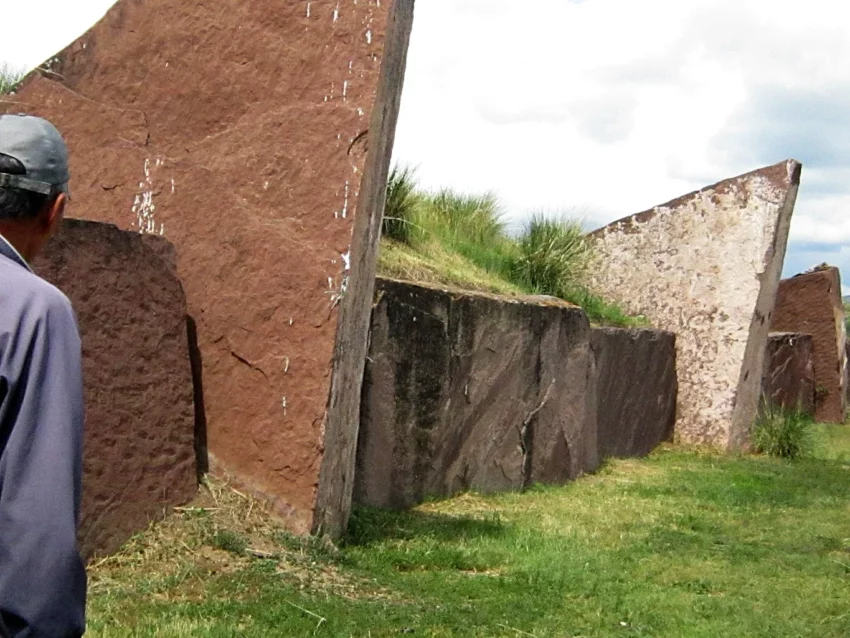The Salbyk kurgan is an ancient burial mound located in the Khakassia Republic, Russia. It dates back to the 7th century BC and is associated with the Scythian culture. This monumental structure is one of the largest of its kind, reflecting the complex social structures and burial practices of the nomadic tribes that roamed the Eurasian steppes. The kurgan was discovered in the 20th century and has since been a subject of archaeological interest, revealing insights into the beliefs, rituals, and way of life of its builders.
Get your dose of History via Email
Historical Background of Salbyk Kurgan
The Salbyk kurgan was unearthed in the 1950s by Russian archaeologists. It is believed to have been constructed by the Tagar culture, a part of the wider Scythian civilization. The Tagar people were known for their skilled metalwork and horse breeding. They inhabited the Minusinsk Basin, an area rich in resources and conducive to their nomadic lifestyle.
Archaeological evidence suggests that the Salbyk kurgan served as a royal burial site. The mound covers a large area and is surrounded by stone slabs with carvings. These carvings depict animals and scenes that are characteristic of Scythian art. The kurgan’s size and the complexity of its construction indicate the high status of those interred within.
Over time, the Salbyk kurgan became a historical landmark. It has not been continuously inhabited but has been visited and studied by numerous researchers. The site has not been the scene of any known historical events beyond its use as a burial ground. However, it offers a window into the past, providing valuable information about the people who built it.
The discovery of the Salbyk kurgan has contributed significantly to our understanding of the Scythian culture. The artifacts found within, including jewelry, weapons, and horse gear, are testaments to the craftsmanship and wealth of the Tagar people. These findings have helped historians piece together the social hierarchy and cultural practices of this ancient civilization.
Despite its remote location, the Salbyk kurgan attracts scholars and tourists alike. Its significance lies not only in its scale but also in the stories it holds about the nomadic tribes of the Eurasian steppes. The kurgan remains an important cultural and historical site, offering insights into a long-gone era.
About Salbyk Kurgan
The Salbyk kurgan is a monumental structure, characterized by its large size and the presence of numerous stone slabs, or stelae, around its perimeter. These stelae are intricately carved with animal figures and other motifs typical of Scythian art. The central mound is an impressive feat of ancient engineering, constructed from earth and stone.
The kurgan’s construction involved the accumulation of soil and rocks to form a large mound, with a wooden chamber at its core. This chamber likely housed the remains of the deceased, along with various grave goods. The outer ring of stelae served both as a boundary and a display of power and artistry.
Materials used in the construction of the Salbyk kurgan were sourced locally, demonstrating the Tagar people’s knowledge of their environment. The wooden elements have deteriorated over time, but the stone slabs have withstood the test of time, preserving the intricate carvings for modern-day observers.
Architectural highlights of the Salbyk kurgan include the alignment of the stelae and the central mound’s construction technique. The precise arrangement of the stones suggests a deep understanding of spatial design and may have had astronomical or ritual significance.
The Salbyk kurgan stands as a testament to the building capabilities of its creators. Its preservation allows for a glimpse into the architectural practices of the Scythian period, showcasing a blend of functionality and artistic expression that has captivated researchers and visitors alike.
Theories and Interpretations
Several theories exist regarding the purpose and significance of the Salbyk kurgan. Most scholars agree that it served as a royal burial site, reflecting the social status of the individuals interred within. The presence of rich grave goods supports this interpretation, suggesting a belief in an afterlife where such items were necessary.
Some researchers propose that the kurgan was also a site for ritual ceremonies. The arrangement of the stelae and the mound’s size may have provided a space for gatherings and the performance of religious rites. These activities would have reinforced the power and status of the ruling elite.
The mysteries of the Salbyk kurgan include the exact identity of those buried there and the full extent of the rituals associated with the site. While the carvings on the stelae offer some clues, much of the kurgan’s story remains untold, pieced together from archaeological evidence and historical records.
Dating of the Salbyk kurgan has been carried out using various methods, including typological analysis of the artifacts and radiocarbon dating. These techniques have helped establish the kurgan’s age and its place within the broader context of Scythian archaeology.
The interpretations of the Salbyk kurgan continue to evolve as new discoveries are made. Each finding adds a piece to the puzzle, gradually revealing the complex cultural landscape of the Scythian world and the role of monumental structures like the Salbyk kurgan within it.
At a glance
Country: Russia
Civilization: Scythian (Tagar culture)
Age: 7th century BC

